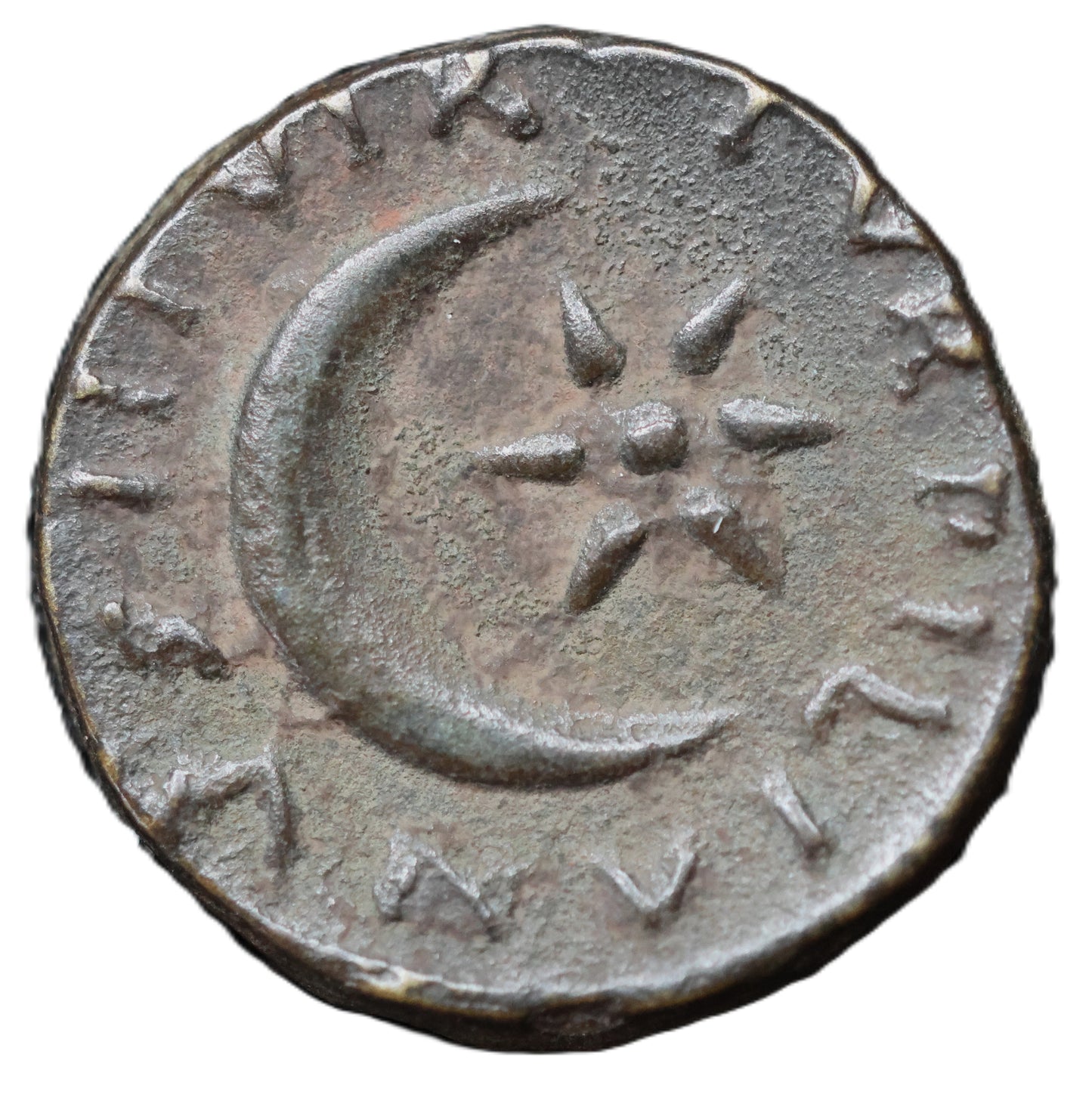The Imperial Hoard
Augustus Bronze – Macedonian Provincial Issue – Crescent & Star Reverse (c. 27 BC – AD 14)
Augustus Bronze – Macedonian Provincial Issue – Crescent & Star Reverse (c. 27 BC – AD 14)
Couldn't load pickup availability
Augustus Bronze – Macedonian Provincial Issue – Crescent & Star Reverse (c. 27 BC – AD 14)
This listing is for an ancient bronze coin of Augustus (27 BC – AD 14), the first Emperor of Rome. Struck at a provincial mint, likely Thessalonica in Macedonia, the coin depicts the youthful laureate head of Augustus on the obverse with the legend CAESAR AVGVSTVS.
The reverse features a crescent moon with a star above, surrounded by Greek legend — a symbolic type reflecting both celestial imagery and local cult practice. These provincial issues were struck for circulation in the eastern provinces of the Empire, providing local coinage under the authority of the emperor.
Coin Details
-
Emperor: Augustus (27 BC – AD 14)
-
Denomination: Provincial Bronze (AE)
-
Date: c. 27 BC – AD 14
-
Obverse: Laureate head of Augustus right, CAESAR AVGVSTVS.
-
Reverse: Crescent moon with star above, Greek legend around. Mint of Thessalonica, Macedonia (attributed).
-
Metal: Bronze
-
Diameter: ~20–22 mm
-
Weight: ~6–7 g (varies by specimen)
Condition
An honest and collectable provincial bronze, with the portrait of Augustus clear and the reverse devices (crescent and star) well-defined. Surfaces are typical for an ancient bronze with circulation wear and patination. Please consult the photographs to judge condition for yourself.
Collectors’ Notes
While not a silver denarius, this is a desirable provincial bronze of Augustus, showing one of the most distinctive reverse types of the era. The celestial imagery is closely linked to Augustus’ political propaganda, associating his reign with divine and cosmic order. Coins of this type circulated widely in Macedonia and neighbouring regions, offering a more affordable entry into collecting the coinage of Rome’s first emperor.




